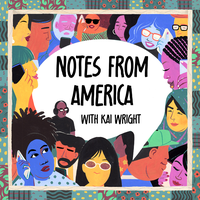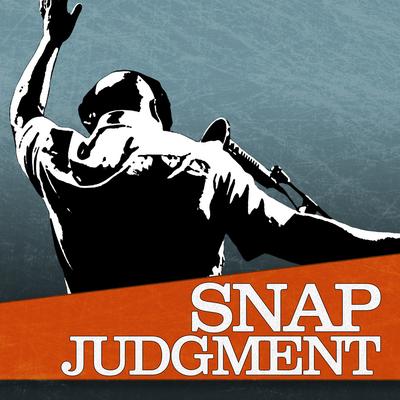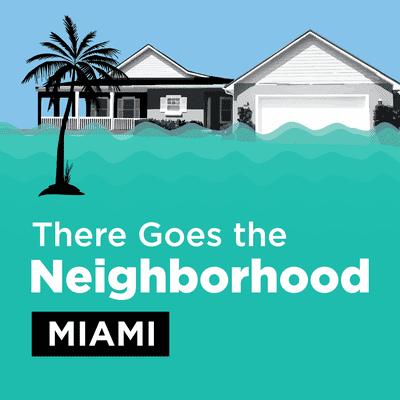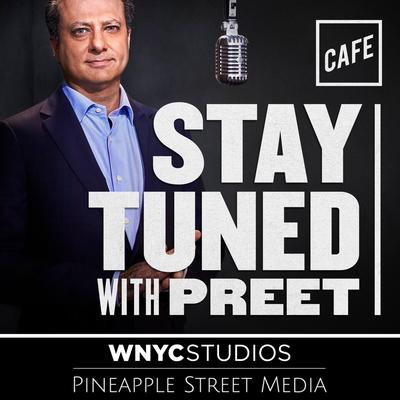Monterey Park: The Making of America’s First Suburban Chinatown
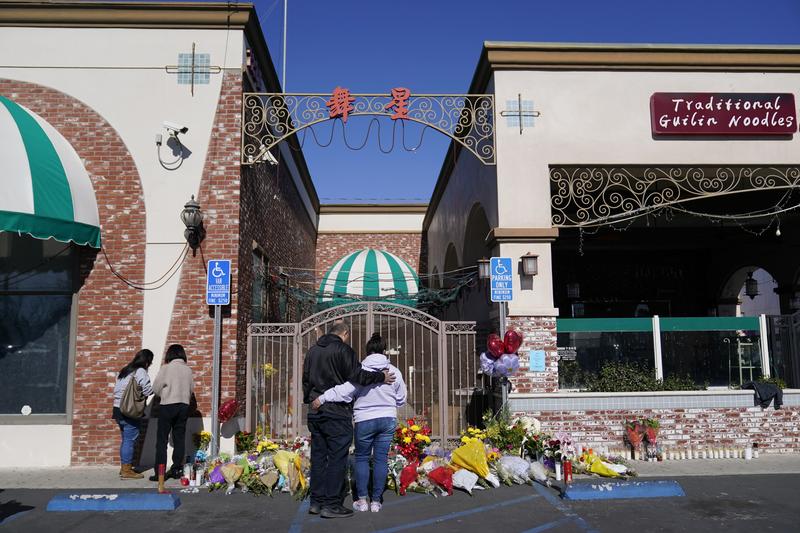
( Ashley Landis / AP Photo )
[music]
Kai Wright: It's Notes from America. I'm Kai Wright. We are just a few weeks into the new year and we can't escape one maddeningly stubborn problem.
Speaker 1: The deadly toll of gun violence is again, our top story tonight.
Speaker 2: Another mass shooting claiming lives in California.
Speaker 3: 11 people were killed in Monterey Park, California.
Speaker 4: Well, sadly, we are turning now to another shooting, this one at a nightclub.
Speaker 5: [unintelligible 00:00:32] another mass shooting in California. This one in Half Moon Bay.
Kai: There have already been at least 39 mass shootings this year. That's according to the gun violence archive. One of them has struck a particularly emotional nerve because of the circumstances. It happened in Monterey Park, California, a predominantly Asian-American suburb at a dance hall on the eve of Lunar New Year. Both the gunman and his victims were of Chinese descent. We don't know his motives, but the attack nonetheless sent shockwaves through Asian American communities around the country where people just frankly have already been on edge for a few years.
To learn more about Monterey Park and its history, we called up a scholar who grew up nearby. James Zarsadiaz is a professor of history at the University of San Francisco, and he is the author of the book; Resisting Change in Suburbia: Asian Immigrants and Frontier Nostalgia in L.A. James, thanks for making time for us.
James: Thanks for having me.
Kai: You published an op-ed in The LA Times in response to the shooting in Monterey Park, and I really was moved by the way you opened the column. You wrote for thousands of fellow Asian Americans, "Monterey Park is our home even if we don't live there". Just to start us off, what do you mean by that?
James: For me, for a lot of Asian Americans, what happened in Monterey Park was really triggering and painful. We're still obviously working through all of this and processing things. Because again, of the familiarity of the landscape, Monterey Park really embodies how a lot of Asian Americans live today with single-family homes in suburbs. There's a bit of a twist to that dimension in the sense that these strip malls are not necessarily mom-and-pop shops owned by white families or rows and rows of mainstream American chains.
In this case, places like Monterey Park are dim sum restaurants, barber shops by the dozens, Buddhist temples, along with Christian churches. That space of where the crime happened and the violence occurred is especially familiar to children of immigrants whose parents and elders go to places like dance halls and social gatherings like that.
Kai: Let me ask you about that. Because honestly, I have to say I am one of the people who I learned about Monterey Park as this majority Asian American community through this horrible news and I detest that, that that's how I came to this place. One of the odd moments of, I don't know if the word right word is joy, but that I get when I was reading about it, is the vision of these dance halls. Can you say a word or two just to like, help us place this in joy, like a word or two about the role these dance halls play in a lunar new year?
James: Absolutely. I think, and this is why what happened is so personal and resonates with a lot of Asian Americans, is these dance halls are places of joy. As you said, they're places where revelers come together. In this case, it was because of Lunar New Year was especially boisterous and fun, and presumably loud and exciting.
[music]
James: Even apart from the Lunar New weekend, these dance halls are spaces of gathering community. My own mother goes to places like this where she meets up with a bunch of her friends around her generation, and a lot of them are retirees or people who are empty nesters and they just want to have time with their friends and their loved ones. They go to these dance halls where all kinds of music are played.
[music]
James: Sometimes these dance halls are more ethnic-specific, so it caters to Chinese, it caters to a lot of Korean or Filipino immigrants or Filipino Americans or Asian Americans, broadly speaking. Oftentimes, these spaces are the predominant community are immigrants and refugees, and oftentimes multi-generational. That's why, when we think of these dance halls, they are places of joy. They are places of excitement and caring and love and all of these things. I think that's why especially [unintelligible 00:05:12], we heard about Monterey Park.
Kai: Yes. Monterey Park has been called an ethnoburb. That's a term a lot of us are learning for the first time as a consequence of this awful news story, so what is an ethnoburb?
James: Ethnoburb is basically a suburb that has a large concentration of a specific ethnic or racial group. That can be measured in a variety of ways. Oftentimes, it's just population size. Do you have a plurality? A majority of typically non-white groups. Monterey Park is, in many ways, the OG, the original ethnoburb because it reached an Asian majority by the early 1990s. Scholars, researchers, pundits, and even many residents themselves consider Monterey Park the original ethnoburb, the first suburban Chinatown.
What happened in Monterey Park was a large concentration of particularly Chinese from Hong Kong and Taiwan settling in, during the late '70s, but really in the 1980s. From there, you start to see this kind of mushrooming of, if you will, of Asian American communities surrounding Monterey Park. It'll extend to Alhambra, it'll extend to San Gabriel, Rosemead, Temple City on the west side of San Gabriel Valley. It pretty much jump eastward to more outer ring suburbs of LA.
Kai: As that migration began in the '70s and '80s into those ethnoburbs, who exactly are we talking about? Was there a class question here amongst Asian Americans that might reflect the change in who immigrated into the US before and after the 1965 Immigration Reform Act, which opened the door to more people from Asian countries?
James: Well, in the 1980s, a lot of the Asian residents who moved into Monterey Park were largely from Hong Kong and Taiwan. Many of them were middle class or affluent, and they landed what is often called white-collar jobs. In business, medical field, engineering, and so forth. The class difference is stark compared to the pre-1965 counterparts who many of them were, oftentimes, agricultural workers working in the service industry. Monterey Park quickly garnered a reputation as the place you want to be if you are an Asian immigrant of a certain class background with certain means.
As the 1980s and 1990s carried on, there were other suburbs surrounding Monterey Park that became more fashionable. These were, by the way, suburbs that, for many years, were majority white, and many of them quite well-to-do and seen as rich communities for even white Americans. The incomes, and if you will, privileges that came with higher incomes allowed them to enter spaces that were otherwise not open to them a couple of decades prior.
Kai: How were they received?
James: With resistance, oftentimes. Some residents were open to having Asian immigrants so long as they assimilated or attempted to assimilate or demonstrate gestures towards assimilation. In other words, for example, not speaking Chinese in public. The imposition is largely, not necessarily just the cultural aspects, but also, again, because of the aesthetic. There were, again, now more Chinese supermarkets and businesses, Chinese signage that was not understood by non-Chinese speakers.
It became a battle zone and temperatures eventually cooled down, and residents reached accord in some ways. There were definitely a lot of moments of hostility and also a lot of moments of learning and genuine interest in trying to understand each other.
Kai: As I gather, the folks who were moving to the neighborhood were moving as home buyers. I wonder what were they seeking in that regard, as home buyers moving to these places, what is it they were looking for, you think?
James: It sounds very romanticized and cliché, but they're searching for the suburban American dream. That suburban American dream includes a single-family home. It includes a nice car, it includes a stable career, it includes family life, and all of the trappings of suburbia. Not just live there, but own there. Really, again, creating this idea that they have established themselves in a country that, for a lot of people, is the promised land.
Kai: Let me ask you a tough question here too because when we talk about the suburbs and the movement to the suburbs, it's impossible for me not to think about white flight in general and all of its versions. I just wonder how much of what you're describing was also white flight amongst a certain class of Asian Americans from the intercity communities that were largely Black, Mexican, and lower-income Asian American. Is that a fair comparison? Does that even apply here?
James: Yes. There are a couple of ways I want to respond to that. The first thing is that, and this is going back to a question about class and so the earlier pre-1965 generation oftentimes relied on the urban enclave of Chinatown, or historic Filipino town, or other neighborhoods across the United States because they didn't have the income and means to suburbanize.
That's also coupled with the fact that before the civil rights movement, they couldn't even fathom or think about, or even dream about the possibility of moving to the suburbs. The other aspect that I want us to consider is that, yes, white folks also left these suburbs with the increase of non-white residents, particularly immigrants, particularly Asians. For some, it was out of prejudice, but for some, it was for them, at least in their eyes, they believe that the amount of change that occurred, and quite rapidly was too much for them to take.
It's not necessarily to apologize or condone their behavior and their decisions to leave, but it's a way of trying to understand why they felt that that amount of change was too hard to wrap their heads around. Again, one could easily infer from that, that that is racial. In some cases, in many ways, yes it was, but for some of them, it was more like, "There's a type of suburban landscape I'm used to that I'm not feeling anymore, and I need to go somewhere else to find that".
Kai: It's interesting because the whole idea of the suburbs, well, one of the ideas of the suburbs is, "I'm not here to be challenged".
James: Right, exactly.
Kai: "This is comfortable, and now you're challenging me with this diversity stuff-
James: Right, exactly.
Kai: -and that's not what I signed up for."
James: Right, and a lot of it too. In the range of reactions was anywhere between wanting to include Asian Americans in particular, or on the other extreme, vilifying them, but a lot of people were somewhere in the middle, caught in this moral dilemma. In the context of the '80s and '90s, there was again, for a lot of Americans, including white Americans, an openness or at least a willingness to see what this multiracial America could look like.
It's that moment in the 80s, 90s, and 2000s where a lot of these suburbs became battlegrounds around race, and racial inclusion, and change, and diversity.
[music]
Kai: I'm talking with historian, James Zarsadiaz, about the story of Monterey Park, California. Coming up, what it means that this awful violence occurred in this place of all places.
[music]
Kai: We, of course, have since the Monterey Park shooting, had yet another mass shooting in Half Moon Bay in Northern California, also involving a shooter of Chinese descent. In this case, the victims are not also Asian American, but I just taken together these stories, I wonder about the emotional toll in general on the Asian American community, particularly the Chinese American community given all that we've heard over the last few years about people who just feel newly uncertain and unsafe in their communities.
James: Absolutely. These two tragedies, back-to-back, during and around Lunar New Year, it's tough to process. A lot of folks, myself included who identify as Asian American, are still going through the motions, why this has been disturbing? Why what's occurred over the last few days has been disturbing is because for a lot of Asian Americans since 2020, news of violence towards the Asian American community has become commonplace.
That's not to say it was never there prior to 2020, but the volume, the frequency is why a lot of us feel constant grief, trauma, and fear. When we read those headlines and get the news alerts, we often assume that the perpetrator or perpetrators were doing this as an act of anti-Asian violence. In these two cases, we don't know the motives, that's still being investigated, both perpetrators are of Asian descent. That's where the story gets a little tricky.
I think that's partly why in these two examples, specifically with Monterey Park and Half Moon Bay, Asian Americans especially are like, "What is happening here?" That's a broader conversation too to have around the debates around gun control, but also mental health. I can go down that round on and on, and within the community with Asian Americans, and how we address mental health. That's why I think a lot of us are still trying to make sense of why these perpetrators did what they did, but also, what does it mean when the perpetrator is "one of their own"?
Kai: There is a real conversation in mini-communities of color about how we handle our mental health and all of the strain. What do you think about the role of mental health in the community in general, not necessarily applying it to these shootings-
James: Sure, sure, sure.
Kai: -which is how that has come up for you in the last couple of weeks?
James: This has come up more anecdotally and more just casually amongst family and friends who we've been talking about what's occurred. For a lot of Asian Americans, particularly immigrants and refugees not wanting to address, maybe not confronting, or maybe minimizing trauma and grief, and anything in that universe of feelings. Because of that onslaught, there's questions of, "How do I manage this? Where do I go? Can I go somewhere? Should I go somewhere? What do people think about seeking out mental health resources and support?" I can go on and on.
I know that a lot of communities of color struggle with that question as well, but the broader feeling is for a lot of Asian Americans, we want to find some joy. [laughs] We want to find some relief. We also need to have a more frank discussion across racial lines, about caring for our communities and thinking through about how we grapple with trauma, including ones that were racially motivated, but also ones that weren't. This is just a way to think through, I want us to think through, "Where do we go from here"? For Asian Americans, we're sorting that out.
Right now, it's just a matter of trying to process all of these examples of terrible and tragic news during what is otherwise supposed to be a happy joyous time. I think that's especially why it's been painful and a grueling process.
Kai: Indeed. James Zarsadiaz is a professor of history at the University of San Francisco and the author of Resisting Change in Suburbia: Asian Immigrants and Frontier Nostalgia in L.A. Thank you so much for this, James.
James: Thank you so much.
[music]
Kai: Notes from America is a production of WNYC Studios. You can follow us wherever you get your podcasts and on Instagram @noteswithkai. Music and mixing by Jared Paul. Matthew Miranda is our live engineer. Reporting, producing, and editing by Karen Frillmann, Vanessa Handy, Regina de Heer, Rahima Nasa, Kousha Navidar, and Lindsay Foster Thomas. A special welcome to our brand new executive producer, Andre Robert Lee. I'm Kai Wright. Thanks for spending time with us.
[music]
[00:19:22] [END OF AUDIO]
Copyright © 2023 New York Public Radio. All rights reserved. Visit our website terms of use at www.wnyc.org for further information.
New York Public Radio transcripts are created on a rush deadline, often by contractors. This text may not be in its final form and may be updated or revised in the future. Accuracy and availability may vary. The authoritative record of New York Public Radio’s programming is the audio record.
